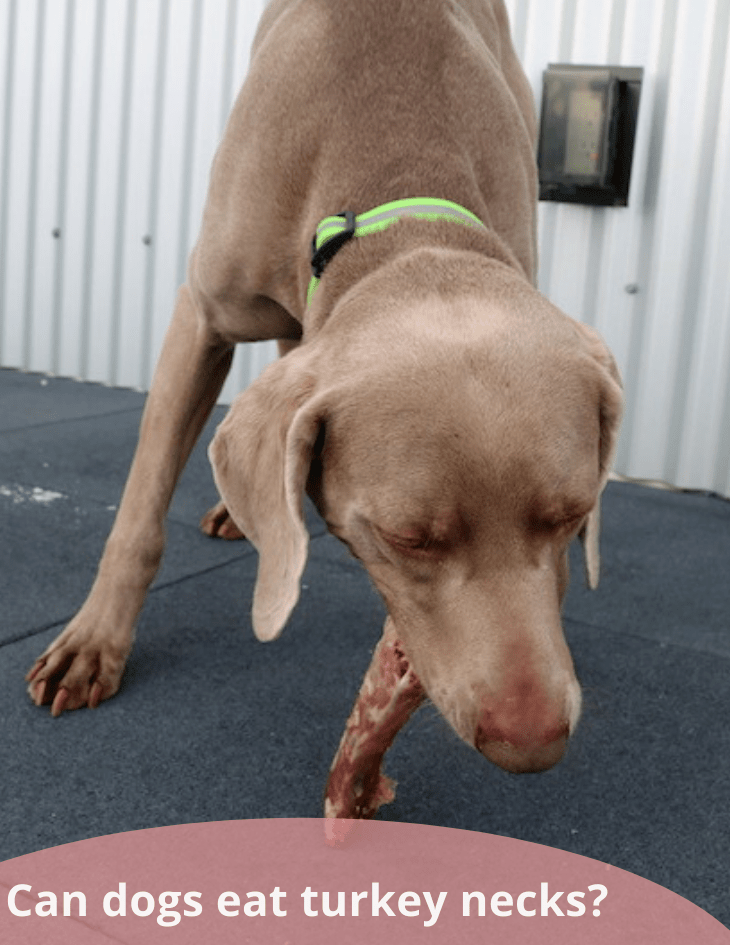Considering that dogs are mainly carnivores, people like to get creative and serve them meats of all types. Because of their deliciousness and benefits, raw turkey necks are among the favorite meals dogs get offered. But are they safe? That’s what you’re about to find out!
Read on to know whether dogs can eat raw turkey necks, along with how to prepare them properly and safely.
Can dogs eat turkey necks? Yes, if they’re raw!
Turkey necks, chicken and duck necks fall into the category of raw meaty bones (RMBs). Without them, a raw diet cannot be considered a balanced one.
That’s because raw bones for dogs:

Even if your dog is not on a raw diet, he can still benefit from chewing on a raw turkey neck.
Poultry necks in particular are chock full of glucosamine and chondroitin, which are important for joint health and a wonderful means of preventing arthritis if fed on a regular basis.
I’ve seen the benefits of feeding my two Boxer mixes raw meaty bones on a regular basis.
I believe dogs should be offered raw bones such as turkey necks several times per week. Just make sure they are, in fact, raw. Cooked bones become more brittle.
Canine digestive systems are highly acidic and designed to effortlessly break down raw meaty bones such as turkey and chicken necks. So there’s no need to worry about their digestibility – just feed them raw.
See my general post, how to safely feed a dog raw bones.
Tip: Raw poultry necks can also be used to make bone broth. I shared a recipe for homemade bone broth here.
*Get our three FREE raw dog food recipes now! Click Here
Benefits of Turkey Necks for Dogs
Raw or dehydrated turkey necks are not only safe for your dogs to eat, but they also offer many nutritional benefits to your canine’s diet, including:
Countless studies have shown the powerful positive effects of the oral supplementation of glucosamine and chondroitin on joint health, arthritis and consequently the overall mobility of dogs and cats.¹ ² In fact, if your pet is suffering from arthritis, there is a high likelihood that your veterinarian will recommend glucosamine and chondroitin to treat your pet.
If you prefer to give your dog natural sources of glucosamine and chondroitin rather than in pill form, you may want to consider turkey necks. The glucosamine and chondroitin found in the cartilage and connective tissue of turkey necks is in a “bio-available” form. This means that it is already in the most digestible and ready-to-use, natural form. Thus, this makes turkey necks a natural remedy for arthritis in dogs.
Dental disease is the most common disease in dogs, affecting 76% of all canines in the United States. Since 2006, there has been a 23.3% increase in the prevalence of dental disease in dogs, with steady growth each year.³
Dental care for dogs is important. If left untreated, dental disease not only leads to bad breath, but also inflamed gums and compromised teeth. It can even become a source of infection affecting the heart, liver, and kidneys of your dog.⁴
One way to ensure the dental health of our canines is the regular brushing of their teeth. This should ideally be done daily, using special toothpaste for dogs.
Turkey necks are healthy dental chews for dogs. If brushing your canine’s teeth is not your thing, or your dog will not tolerate it, why not give them turkey necks instead? The chewing process will naturally aid the removal of plaque and tartar build-up on their teeth.
Dog trainers often recommend the use of Kong toys stuffed with cream cheese or peanut butter to occupy a “busy” dog who finds too many undesirable things to do around the house. Turkey necks are fun for your dog to chew on, and a great alternative option to provide entertainment for a busy dog.
Canines who are eating a large turkey neck will often plant their front feet on the bone to fix it to the ground. This makes gnawing down a turkey neck a physical exercise involving not only their jaw muscles, but also their neck, legs, shoulders and back.
Lastly, turkey necks are an easy way to add variety to the so often monotone diet of our canines.
Can dogs eat chicken hearts and gizzards?
Yes, absolutely. Hearts and gizzards don’t contain any bone and fall into the muscle meat category of raw dog food. They’re fairly easy to source as most grocery stores carry them.
Side note: Yes, you read that right. Hearts and gizzards are not considered organs in raw feeding. Only secreting organs such as liver, kidney, and pancreas (and a few others) are.
Tip: Check the sodium level on the packaging before buying the hearts and gizzards for your dog. It shouldn’t contain more than 400 mg per 1 lb (16 oz) of food. That’s because too much sodium isn’t good for dogs and can cause diarrhea and dehydration.
FAQ
Can dogs eat raw turkey neck and giblets?